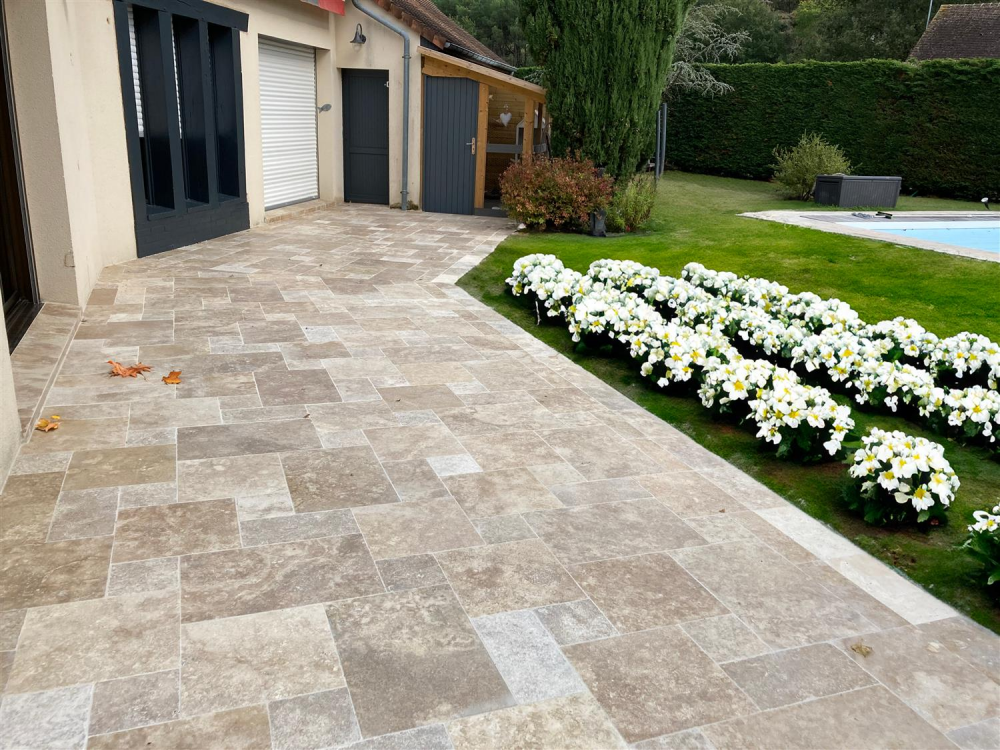The History of Travertine From Ancient Times to Modern Architecture
Your trusted partner for delivering premium natural stones to global markets with excellence and reliability!
The History of Travertine From Ancient Times to Modern Architecture
The History of Travertine: From Ancient Times to Modern Architecture
Ancient Use of Travertine
Travertine has been a widely used natural stone for thousands of years. In Ancient Rome, monumental structures such as the Colosseum and the Roman Forum were built with Standard Mix Travertine. Its durability and elegant appearance made it a top choice for architects of the time. Travertine was not only functional but also aesthetically appealing, which is why both Roman and Greek civilizations adopted it in their most iconic constructions.
Travertine in the Middle Ages and Renaissance
During the Middle Ages, European cathedrals and churches often featured Light Mix Travertine. Its bright and soft tones created a sacred and serene atmosphere in religious and royal buildings. In the Renaissance period, Walnut Travertine, with its deep brown shades, became popular for interior applications, adding richness and warmth to palaces and noble residences. This era further established travertine as a central part of Europe’s architectural heritage.
Travertine in Modern Architecture
The 20th century and beyond witnessed the rise of Silver Travertine, with its grey and silver tones that fit perfectly into modern designs. Travertine has become a staple in both minimalist and luxury projects. Today, Light Mix Travertine is frequently used in hotel lobbies, spa areas, and modern residences, while Silver Travertine is highly favored in office buildings, pool decks, and contemporary façades across Europe.
 Aesthetic and Technical Advantages of Travertine
Aesthetic and Technical Advantages of Travertine
The versatility of travertine lies in its porous structure and wide range of colors. Standard Mix Travertine provides a balanced tone that adapts to both traditional and modern designs, while Walnut Travertine offers a warm, rustic feel. On the other hand, Silver Travertine brings sophistication to contemporary projects. Travertine’s durability and long-lasting quality ensure its ongoing demand in both interior and exterior applications throughout Europe.
Sustainability and Eco-Friendly Nature of Travertine
In today’s world, where sustainability is a growing concern, travertine stands out as an eco-friendly natural stone. It is extracted and processed with minimal impact on the environment. Its longevity reduces the need for replacements, making it a sustainable solution. Particularly, Light Mix Travertine and Walnut Travertine are widely chosen in eco-conscious projects due to their combination of aesthetics and durability.
The Role of Travertine in the European Market
Europe remains one of the largest markets for travertine and other natural stones. Countries like Germany, France, Italy, and the Netherlands continue to import large quantities of travertine for both restoration and new construction. Wholesalers serving these markets often supply Standard Mix Travertine for classical projects and Silver Travertine for modern, high-end developments.
Modern Applications of Travertine
In modern design, Light Mix Travertine brightens up kitchens and bathrooms with its soft, inviting tones, while Walnut Travertine adds a cozy, rustic feel to living spaces and restaurants. Silver Travertine is highly popular for hotel façades, luxury office projects, and pool surroundings. Standard Mix Travertine, with its versatility, is frequently chosen for both public spaces and private residential areas.
The Historical and Commercial Importance of Travertine Varieties
Throughout history, different travertine varieties have shaped European architecture. For wholesalers, these varieties represent consistent demand across diverse markets. Standard Mix Travertine, once central in ancient Roman construction, is now essential for restoration projects. Meanwhile, Light Mix Travertine, Walnut Travertine, and Silver Travertine dominate modern architecture, offering both aesthetic and commercial benefits.
Conclusion: The Journey and Future of Travertine
In summary, travertine is a natural stone that has proven itself from ancient civilizations to modern architecture. Light Mix Travertine, Standard Mix Travertine, Walnut Travertine, and Silver Travertine continue to meet diverse design and construction needs in the European market. With its historical legacy and modern relevance, travertine offers wholesalers not only a timeless product but also a profitable path in the natural stone trade.
